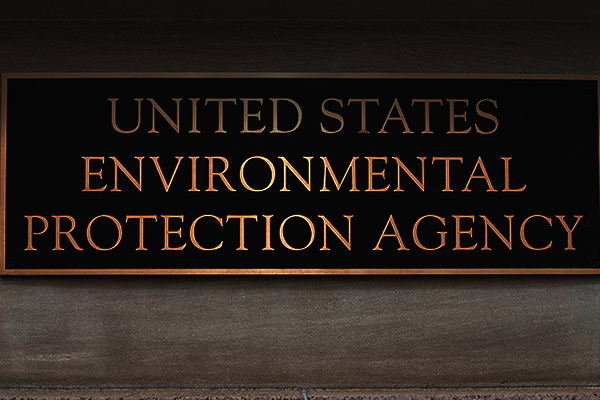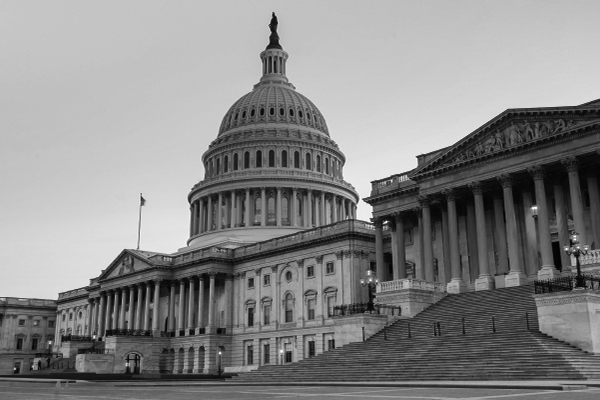The Next President Should Fill Supreme Court Vacancy

Who should fill the vacancy on the Supreme Court—Barack Obama or the next president? As an advocacy organization focused on energy and environmental policy, we are keenly aware of the implications of a change in the Supreme Court’s composition. Justice Scalia was a critical voice in the ongoing conversation about the limits of executive agency authority. He spoke of the need for energy policies that properly consider the tradeoffs involved in promoting one energy source over another. Most importantly, though, he insisted on giving people a voice on government actions that directly impact their daily lives. For these reasons, we support Americans’ right to decide who should nominate Justice Scalia’s replacement and what direction the Court should take. Below are our reasons for why the next president, not Barack Obama, should fill the vacancy on the Supreme Court.
1) Replacing Justice Scalia means setting new policy on countless issues; isn’t that what elections are all about?
The Framers did not intend for the Supreme Court to set policy. The courts were supposed to be the umpires calling balls and strikes. However, over the past several decades, the legal system has assumed a much larger role—one that comes closer to ratifying legislative and executive actions that seemingly don’t recognize limits to the federal government’s authority. As a result, the courts have become an undeniable part of the policymaking process. During President Obama’s tenure, the nation’s highest court has resolved or weighed in on pressing political topics, ranging from energy and environmental policy to healthcare, free speech, immigration, gun rights, affirmative action, and voting rights. Replacing Justice Scalia is implicitly a referendum on the rights, responsibilities, and livelihood of all Americans. Such an important decision should be part of the November ballot.
2) President Obama’s constitutional authority to nominate a qualified individual to the Supreme Court applies equally to the next president.
Article II, Section 2, Clause 2 of the Constitution states, “The President…shall nominate, and by and with the Advice and Consent of the Senate…Judges of the supreme Court…”[1] Those words are worth reading for a few reasons. First, no further language specifies the time period for when this must occur. Second, the president does not appoint judges; he only nominates them. After that, the Senate takes over. Thus, like it or not, the Constitution does not mandate nor support any claim that President Obama must fill Justice Scalia’s seat. In fact, it explicitly subjects such appointments to the political process. What better resolution to the process than an election?
3) The Senate’s Advice and Consent role is a check on executive authority, not a rubber stamp.
Congress is a coequal branch of government charged with specific duties under the Constitution meant to check the Executive. The “Advice and Consent” power (quoted in point two) was created for precisely this reason. The Framers envisioned the political appointment process to be adversarial and inherently political. In order to adequately balance the Executive’s authority, the Constitution provides the Senate with the power to both grant and withhold consent. Any other conclusion would diminish essential constitutional principles, including the separation of powers and checks and balances.
4) The Supreme Court has had to rein in executive agency abuse under President Obama. Yet, any Obama nominee will most likely enable the executive branch’s aggregation of power.
The Environmental Protection Agency’s (EPA) so-called “Clean Power Plan” is a microcosm of the president’s approach to policymaking and working with the legislative branch. After failing to convince a filibuster-proof Democratic Senate to approve his cap-and-trade scheme in 2010, he turned to EPA to circumvent the legislative process. Now, the executive agency tasked with environmental protection is attempting to mandate a national energy policy. Not only does this usurp the well-established role of states’ control over energy policy,[2] but it’s also well outside the expertise or congressional mandate of the agency.[3] President Obama knew this, but chose to proceed anyway.
5) Giving the American people input into who will fill the vacancy is a natural response to the president’s elevation of his “pen and phone” to dictate federal policy.
No one articulated the logical result of this approach to governing better than Justice Scalia: “The American people love democracy and the American people are not fools … Value judgments, after all, should be voted on, not dictated; and if our Constitution has somehow accidentally committed them to the Supreme Court, at least we can have a sort of plebiscite each time a new nominee to that body is put forward.”[4]
6) Elections have consequences.
Yes, President Obama was elected in 2012. But he is merely half of the equation. In 2014, his party lost nine seats and control of the U.S. Senate.[5] Also, the American public’s disdain with the president’s use of executive authority to push his agenda is hardly a phenomenon limited to the U.S. Senate. Since Barack Obama took office in 2009, his party has taken a beating in elections. The numbers are quite astounding. According to Larry Sabato, “Democrats during Obama’s presidency have lost 11 governorships, 13 U.S. Senate seats, 69 House seats, and 913 state legislative seats and 30 state legislative chambers.[6] American people don’t want to rubber stamp the president’s agenda; they seek to reject it.
7) Traditional Senate prerogative urges waiting until the November election before proceeding.
The record is pretty clear on how the president and vice president would respond if the circumstances were reversed. According to The New York Times, then-Senator Joe Biden declared in 1992 that “there should be a different standard for a Supreme Court vacancy ‘that would occur in the full throes of an election year … It would be our pragmatic conclusion that once the political season is underway, and it is, action on a Supreme Court nomination must be put off until after the election campaign is over.’”[7] Then-Senator Obama echoed this sentiment in 2006:
There are some believe that the president, having won an election, should have complete authority to appoint his nominee…that once you get beyond the intellectual and personal character, there should be no further question as to whether the judge should be confirmed. I disagree with this view.[8]
After Democrats captured the Senate majority in 2006, Obama joined Senator Chuck Schumer in promising to prevent any new Supreme Court nominee from being appointed during President George Bush’s second term. It’s quite audacious of the Administration to entirely reverse their position now that the tables are turned.
8) Eight sitting justices can function perfectly well while the American people weigh in on the direction the Court should take.
Some have argued that the Court cannot meet its workload with less than nine sitting justices. This assertion ignores many instances where eight justices have decided cases when justices had to recuse themselves or the Court was waiting on vacancies to be filled. As constitutional scholars Josh Blackman and Ilya Shapiro have pointed out, “rather than making the judicial system grind to a halt, a Supreme Court vacancy merely delays rulings in a small number of cases.”[9] Several examples highlighted by Messrs. Shapiro and Blackman confirm this point.
9) Important cases that rely on narrow opinions can and likely will be reargued next year.
Justices on the Supreme Court have consistently recognized the importance of having a full court when deciding cases that set precedent and a ninth justice’s vote will be determinative. Here’s more from Messrs. Shapiro and Shapiro: “In the rare instances when eight justices split evenly, 25 times the court affirmed the lower-court judgment without opinion (or precedential value) and 54 times the court set the case for reargument.” Of the latter, “only 25 of those cases ended up 5-4, meaning the new justice made no difference in half of the reargued cases.”[10]
10) In the modern political era, there is no precedent guiding how the president should proceed.
As FactCheck.org explains, “This is the first time in 116 years that a Supreme Court vacancy occurred in a lame-duck president’s final year in office.”[11] Those who point to Ronald Reagan’s appointment of Justice Kennedy ignore that Justice Powell stepped down in June 1987, which is a far cry from the current situation where Justice Scalia died nine months before the next election. Further, in the one instance where a president attempted to fill a contemplated vacancy (Lyndon B. Johnson’s nomination of Abe Fortas to backfill Chief Justice Warren), the Senate refused to move forward because it was too close to the next presidential election. On a side note, when Justice Fortas did resign from the Court in 1969, his seat was open for more than a year until Harry Blackmun was confirmed. To the extent relevant precedent exists, it argues for the American people to decide who should make the nomination.
[1] U.S. Const. Article II, Section 2, Clause 2, http://www.heritage.org/constitution/#!/articles/2/essays/91/appointments-clause
[2] David B. Rivkin, Jr., Mark DeLaquil, Andrew Grossman, Does EPA’s Clean Power Plan Proposal Violate the States’ Sovereign Rights?, Engage Volume 16, Issue 1, June 15, 2015, http://www.fed-soc.org/publications/detail/does-epas-clean-power-plan-proposal-violate-the-states-sovereign-rights.
[3] William Yeatman, EPA’s Clean Power Plan Overreach, Competitive Enterprise Institute, OnPoint No. 204, July 28, 2015, https://cei.org/sites/default/files/William%20Yeatman%20-%20EPA%27s%20Clean%20Power%20Plan%20Overreach.pdf.
[4] Planned Parenthood of Southeastern Pa. v. Casey (91-744), 505 U.S. 833 (1992), https://www.law.cornell.edu/supct/html/91-744.ZX4.html.
[5] Guy Benson, Final Score: GOP Gains Nine Senate Seats, Will Hold 54–46 Majority, Townhall, December 8, 2014, http://townhall.com/tipsheet/guybenson/2014/12/08/final-score-gop-gains-nine-senate-seats-will-hold-5446-majority-n1928620.
[6] Katie Sanders, Have Democrats Lost 900 Seats in State Legislatures Since Obama Has Been President?, Politifact, January 25, 2015, http://www.politifact.com/punditfact/statements/2015/jan/25/cokie-roberts/have-democrats-lost-900-seats-state-legislatures-o/.
[7] Julie Hirschfeld Davis, Joe Biden Argued for Delaying Supreme Court Picks in 1992, The New York Times, February 22, 2016, http://www.nytimes.com/2016/02/23/us/politics/joe-biden-argued-for-delaying-supreme-court-picks-in-1992.html.
[8] The Federalist, 10 Times Democrats Vowed To Block Republican Court Nominees, February 16, 2016, http://thefederalist.com/2016/02/16/10-times-democrats-vowed-to-block-republican-nominees/.
[9] Josh Blackman and Ilya Shapiro, Only Eight Justices? So What, The Wall Street Journal, February 23, 2016, http://www.wsj.com/articles/only-eight-justices-so-what-1456272088.
[10] Blackman and Shapiro, Only Eight Justices?.
[11] Eugene Kiely, Cruz, Rubio Twist Court ‘Precedent’, FactCheck.org, February 17, 2016, http://www.factcheck.org/2016/02/cruz-rubio-twist-court-precedent/.



